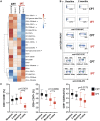Causal association between periodontitis and hypertension: evidence from Mendelian randomization and a randomized controlled trial of non-surgical periodontal therapy
- PMID: 31504461
- PMCID: PMC6837161
- DOI: 10.1093/eurheartj/ehz646
Causal association between periodontitis and hypertension: evidence from Mendelian randomization and a randomized controlled trial of non-surgical periodontal therapy
Abstract
Aims: Inflammation is an important driver of hypertension. Periodontitis is a chronic inflammatory disease, which could provide a mechanism for pro-hypertensive immune activation, but evidence of a causal relationship in humans is scarce. We aimed to investigate the nature of the association between periodontitis and hypertension.
Methods and results: We performed a two-sample Mendelian randomization analysis in the ∼750 000 UK-Biobank/International Consortium of Blood Pressure-Genome-Wide Association Studies participants using single nucleotide polymorphisms (SNPs) in SIGLEC5, DEFA1A3, MTND1P5, and LOC107984137 loci GWAS-linked to periodontitis, to ascertain their effect on blood pressure (BP) estimates. This demonstrated a significant relationship between periodontitis-linked SNPs and BP phenotypes. We then performed a randomized intervention trial on the effects of treatment of periodontitis on BP. One hundred and one hypertensive patients with moderate/severe periodontitis were randomized to intensive periodontal treatment (IPT; sub- and supragingival scaling/chlorhexidine; n = 50) or control periodontal treatment (CPT; supragingival scaling; n = 51) with mean ambulatory 24-h (ABPM) systolic BP (SBP) as primary outcome. Intensive periodontal treatment improved periodontal status at 2 months, compared to CPT. This was accompanied by a substantial reduction in mean SBP in IPT compared to the CPT (mean difference of -11.1 mmHg; 95% CI 6.5-15.8; P < 0.001). Systolic BP reduction was correlated to periodontal status improvement. Diastolic BP and endothelial function (flow-mediated dilatation) were also improved by IPT. These cardiovascular changes were accompanied by reductions in circulating IFN-γ and IL-6 as well as activated (CD38+) and immunosenescent (CD57+CD28null) CD8+T cells, previously implicated in hypertension.
Conclusion: A causal relationship between periodontitis and BP was observed providing proof of concept for development of clinical trial in a large cohort of hypertensive patients. ClinicalTrials.gov: NCT02131922.
Keywords: Genetics; Hypertension; Inflammation; Periodontitis; Treatment; Vascular function.
© The Author(s) 2019. Published by Oxford University Press on behalf of the European Society of Cardiology.
Figures




Comment in
-
Periodontitis and hypertension: causally linked by immune mechanisms.Eur Heart J. 2019 Nov 1;40(42):3471-3473. doi: 10.1093/eurheartj/ehz729. Eur Heart J. 2019. PMID: 31589300 No abstract available.
Similar articles
-
Periodontal therapy and treatment of hypertension-alternative to the pharmacological approach. A systematic review and meta-analysis.Pharmacol Res. 2021 Apr;166:105511. doi: 10.1016/j.phrs.2021.105511. Epub 2021 Feb 19. Pharmacol Res. 2021. PMID: 33617973
-
Blood Pressure and Risk of Cardiovascular Disease in UK Biobank: A Mendelian Randomization Study.Hypertension. 2021 Feb;77(2):367-375. doi: 10.1161/HYPERTENSIONAHA.120.16138. Epub 2021 Jan 4. Hypertension. 2021. PMID: 33390054
-
Periodontal disease increases the severity of chronic obstructive pulmonary disease: a Mendelian randomization study.BMC Pulm Med. 2024 May 3;24(1):220. doi: 10.1186/s12890-024-03025-6. BMC Pulm Med. 2024. PMID: 38702679 Free PMC article.
-
Systemic effects of periodontitis treatment in patients with type 2 diabetes: a 12 month, single-centre, investigator-masked, randomised trial.Lancet Diabetes Endocrinol. 2018 Dec;6(12):954-965. doi: 10.1016/S2213-8587(18)30038-X. Epub 2018 Oct 24. Lancet Diabetes Endocrinol. 2018. PMID: 30472992 Clinical Trial.
-
Periodontitis is associated with hypertension: a systematic review and meta-analysis.Cardiovasc Res. 2020 Jan 1;116(1):28-39. doi: 10.1093/cvr/cvz201. Cardiovasc Res. 2020. PMID: 31549149
Cited by
-
Association between the systemic immune inflammation index and periodontitis: a cross-sectional study.J Transl Med. 2024 Jan 23;22(1):96. doi: 10.1186/s12967-024-04888-3. J Transl Med. 2024. PMID: 38263194 Free PMC article.
-
Causal Relationship between Mitochondrial Biological Function and Periodontitis: Evidence from a Mendelian Randomization Study.Int J Mol Sci. 2024 Jul 21;25(14):7955. doi: 10.3390/ijms25147955. Int J Mol Sci. 2024. PMID: 39063197 Free PMC article.
-
Oral Lesions Associated with COVID-19 and the Participation of the Buccal Cavity as a Key Player for Establishment of Immunity against SARS-CoV-2.Int J Environ Res Public Health. 2022 Sep 9;19(18):11383. doi: 10.3390/ijerph191811383. Int J Environ Res Public Health. 2022. PMID: 36141654 Free PMC article. Review.
-
Roles of oral microbiota and oral-gut microbial transmission in hypertension.J Adv Res. 2023 Jan;43:147-161. doi: 10.1016/j.jare.2022.03.007. Epub 2022 Mar 19. J Adv Res. 2023. PMID: 36585105 Free PMC article.
-
Incidence of Arterial Hypertension in People With Periodontitis and Characterization of the Oral and Subgingival Microbiome: A Study Protocol.Front Cardiovasc Med. 2022 Jan 7;8:763293. doi: 10.3389/fcvm.2021.763293. eCollection 2021. Front Cardiovasc Med. 2022. PMID: 35071346 Free PMC article.
References
-
- GBD 2017 Risk Factor Collaborators. Global, regional, and national comparative risk assessment of 84 behavioural, environmental and occupational, and metabolic risks or clusters of risks for 195 countries and territories, 1990-2017: a systematic analysis for the Global Burden of Disease Study 2017. Lancet 2018;392:1923–1994. - PMC - PubMed
-
- Kotseva K, De Backer G, De Bacquer D, Ryden L, Hoes A, Grobbee D, Maggioni A, Marques-Vidal P, Jennings C, Abreu A, Aguiar C, Badariene J, Bruthans J, Castro Conde A, Cifkova R, Crowley J, Davletov K, Deckers J, De Smedt D, De Sutter J, Dilic M, Dolzhenko M, Dzerve V, Erglis A, Fras Z, Gaita D, Gotcheva N, Heuschmann P, Hasan-Ali H, Jankowski P, Lalic N, Lehto S, Lovic D, Mancas S, Mellbin L, Milicic D, Mirrakhimov E, Oganov R, Pogosova N, Reiner Z, Stoerk S, Tokgozoglu L, Tsioufis C, Vulic D, Wood D; EUROASPIRE Investigators. Lifestyle and impact on cardiovascular risk factor control in coronary patients across 27 countries: results from the European Society of Cardiology ESC-EORP EUROASPIRE V registry. Eur J Prev Cardiol 2019;26:824–835. - PubMed
-
- Drummond GR, Vinh A, Guzik TJ, Sobey CG.. Immune mechanisms of hypertension. Nat Rev Immunol 2019;19:517.. - PubMed
-
- Itani HA, McMaster WG Jr, Saleh MA, Nazarewicz RR, Mikolajczyk TP, Kaszuba AM, Konior A, Prejbisz A, Januszewicz A, Norlander AE, Chen W, Bonami RH, Marshall AF, Poffenberger G, Weyand CM, Madhur MS, Moore DJ, Harrison DG, Guzik TJ.. Activation of human T cells in hypertension: studies of humanized mice and hypertensive humans. Hypertension 2016;68:123–132. - PMC - PubMed
Publication types
MeSH terms
Associated data
Grants and funding
LinkOut - more resources
Full Text Sources
Medical
Research Materials

